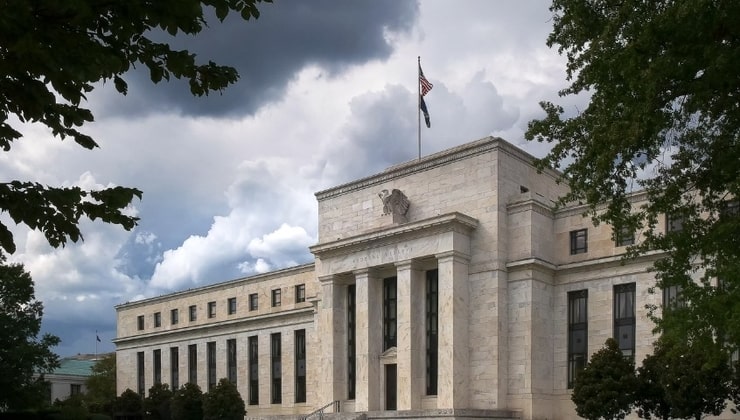- English
- 中文版
On yet another day of losses, USDCHF pushed through both the 2020 lows of 0.9180, and through the June 2015 lows of 0.91550. This takes USDCHF to more than a five-year low, caused by a weakening US dollar mixed with a flight to safe haven currencies like the Swiss franc.
Cautious of excessive monetary and fiscal problems, inflation risks, pandemic uncertainties, geopolitical tensions, and an upcoming US election, traders are hedging a mountain of risk with safe haven assets. These don’t only include traditional safe haven currencies like the CHF and JPY, but also precious metals and for some traders even Bitcoin.
But it’s not solely safe haven flows boosting the Swiss franc - extended losses in the US dollar are also contributing. The USD extended its losses yesterday after the FOMC reinforced its dovish stance - the Federal Reserve is preparing for both best and worst case scenario. Markets are now looking ahead to the September FOMC meeting, when we might hear more about a move to an average-based inflation target.
If considering the value of the USD in terms of the US dollar index (USDX), the CHF has a 3.6% weighting on the US dollar index - the smallest weighting of the six currencies in the index basket.
At these multi-year lows for USDCHF, immediate support will likely be found at the May 2015 low of 0.90880 - the level to beat. However if we see some USD buying after an extensive multi-week sell-off, 0.9180 could be a resistance level to watch before USDCHF continues its move lower. I like the look of a short position on a pullback here.
Traders need to know that USDCHF is a mysterious pair. In May we noticed that EURCHF had reached a suspicious floor just above 1.05. Although there was no official word from the Swiss National Bank (SNB), the central bank’s sight deposits, a typical vehicle for currency intervention, had been skyrocketing since March. It looked like a very prudent attempt to keep EURCHF weakening below 1.05 - limiting CHF strength in euro terms.
USDCHF has a negative correlation with EURUSD anyway, meaning if one moves higher, the other tends to move lower. This was only reinforced while EURCHF was pegged just above 1.05.
On May 18, EURCHF started to move higher. This was the same time that EURUSD broke out of the lower range of 1.0770 - 1.0990. As the euro started to strengthen, I suppose EURCHF weakness became less of a problem for the SNB.
It was a similar time that USDCHF really started to work as a safe haven again. Just eight days later, the USDCHF MACD histogram fell below a zero value.
For a multitude of reasons, the Swiss franc is receiving safe haven bids once again. Pandemic uncertainty, extreme monetary and fiscal policy, geopolitical tensions - it’s no surprise safe havens like CHF, JPY, precious metals and even bitcoin are flying. CHF should continue to receive a bid in the coming months, although I’d be cautious if we were to see EURCHF approach that 1.05 floor again.
Related articles
Ready to trade?
It's quick and easy to get started. Apply in minutes with our simple application process.
The material provided here has not been prepared in accordance with legal requirements designed to promote the independence of investment research and as such is considered to be a marketing communication. Whilst it is not subject to any prohibition on dealing ahead of the dissemination of investment research we will not seek to take any advantage before providing it to our clients. Pepperstone doesn’t represent that the material provided here is accurate, current or complete, and therefore shouldn’t be relied upon as such. The information, whether from a third party or not, isn’t to be considered as a recommendation; or an offer to buy or sell; or the solicitation of an offer to buy or sell any security, financial product or instrument; or to participate in any particular trading strategy. It does not take into account readers’ financial situation or investment objectives. We advise any readers of this content to seek their own advice. Without the approval of Pepperstone, reproduction or redistribution of this information isn’t permitted.


